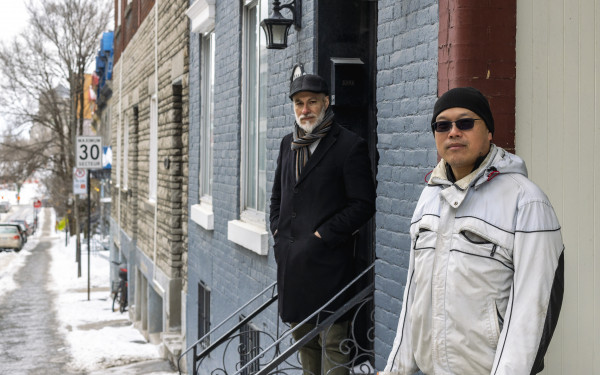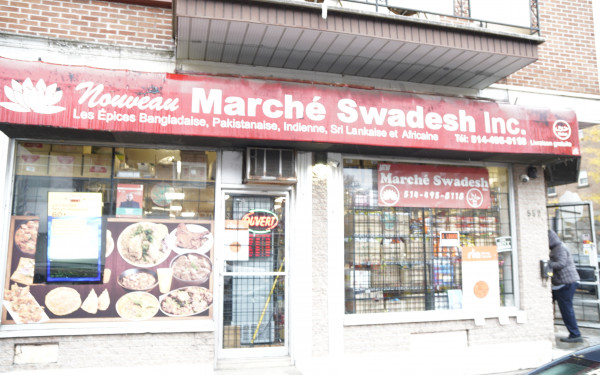Chinatown reimagined: Preserving heritage in a changing landscape
A new project promises to safeguard Chinatown’s historic community
May Chiu is immersed in the heartwarming atmosphere of a Chinatown community home, where the echoes of a century filled with racial injustice—gentrification, economic hardships and discrimination—linger through its walls.
Here, she joins the launch of an important Chinatown preservation research project, witnessing a pivotal moment in the history of Montreal’s Chinatown. During the conference held on Sept. 15, the Institut de recherche et d'informations socio économiques (IRIS) introduced a series of measures aimed at safeguarding the community from gentrification and charting a course towards prosperity.
“Although we didn't know what type of economic development was in store for Chinatown's future, we knew that we had to set a baseline which would include Chinatown's immaterial assets: its living community, made up of seniors, youth, women, and other marginalized people,” says May Chiu, the coordinator of the Chinatown Round Table, established in 2022. This association focuses on involving Chinatown’s community members in decisions made by the government, which has historically neglected them.
Canada has a long history of anti-Chinese racism. On July 1, 1923, the government passed the Chinese Exclusion Act which banned Chinese immigration for 24 years. A few exceptional cases were made for students, merchants, diplomats, or Canadian-born Chinese individuals. Anyone who had Chinese descendants had to register for an additional identification card—a common discriminatory tactic that created further disparity within the country. Under this new rule, anyone holding such a card was relegated to a second-class status.
“We've endured 100 years of racism," says Jessica Chen, the founder of the JIA Foundation, a non-profit organization focused on reconnecting with Chinatown’s heritage.
Canada's history is marked by discriminatory immigration regulations, with the Chinese Exclusion Act being one of the government’s most blatant and overtly racist pieces of legislation. Chinese individuals sought refuge and community in the face of this discrimination, creating a support system for their shared experiences and nurturing their cultural traditions within Chinatowns across North America. However, they were not exempt from discriminatory acts from those outside the community.
In the spring of 2021, developers, Brandon Shiller and Jeremy Kornbluth bought several buildings in Montreal’s Chinatown. Known for their aggressive demeanors towards tenants and their involvement in the gentrification of the Mile End neighborhood, fear spiked in the Chinatown community.
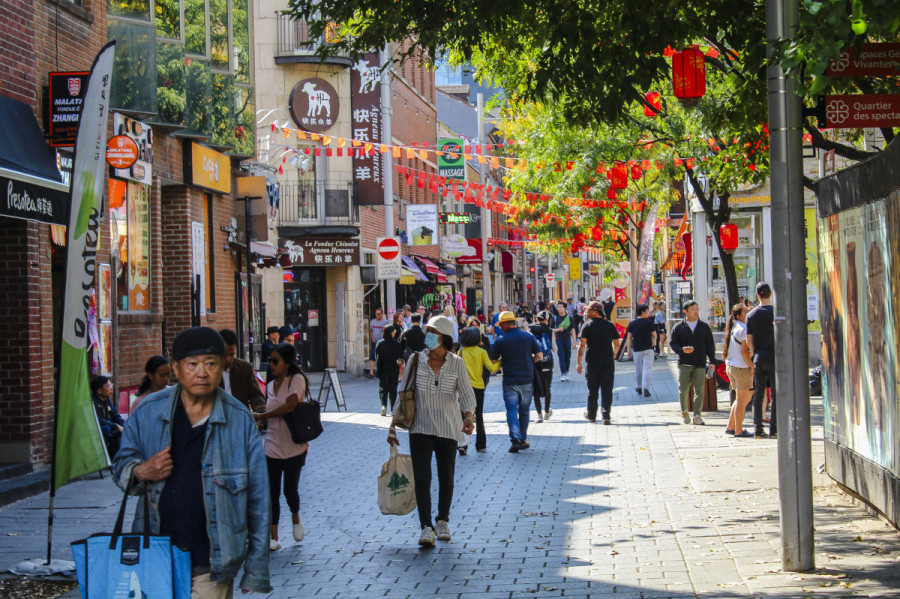
Though it wasn't the first instance in history of potential expropriation of the area, any new occurrences could be a significant threat to the remaining parts of Chinatown.
Protesters successfully rallied for government intervention, resulting in the heritage designation of Montreal’s Chinatown in 2022—the government’s acknowledgment of Chinatown’s historical and social significance, alongside their dedication to the physical preservation of the area. Another measure taken was to regulate the permitted heights of the buildings surrounding the neighborhood, aiming to prevent the construction of large infrastructure.
“When the city and the province declared heritage protection in 2022, we knew that it would not be sufficient to fully protect Chinatown which is also made up of living communities,” Chiu says.
Historical records such as community archives and government policies serve as a reminder of the relentless gentrification of this neighborhood that was overlooked for decades. “It’s important to remember our dark history while we look for future developments,” Chen says.
In 1983, the construction of the Palais des congrès on the south side of Chinatown acted as a constraining factor in its potential expansion. IIn that same year, the development of the Complexe Guy-Favreau and the Place du Quartier close to Chinatown enticed middle-class families to move into the area, leading to a displacement of its existing residents.
Challenges persisted into 1984, when the city declared that de la Gauchetière St. would be designated exclusively for residential purposes, further constraining the growth and development of Chinatown.
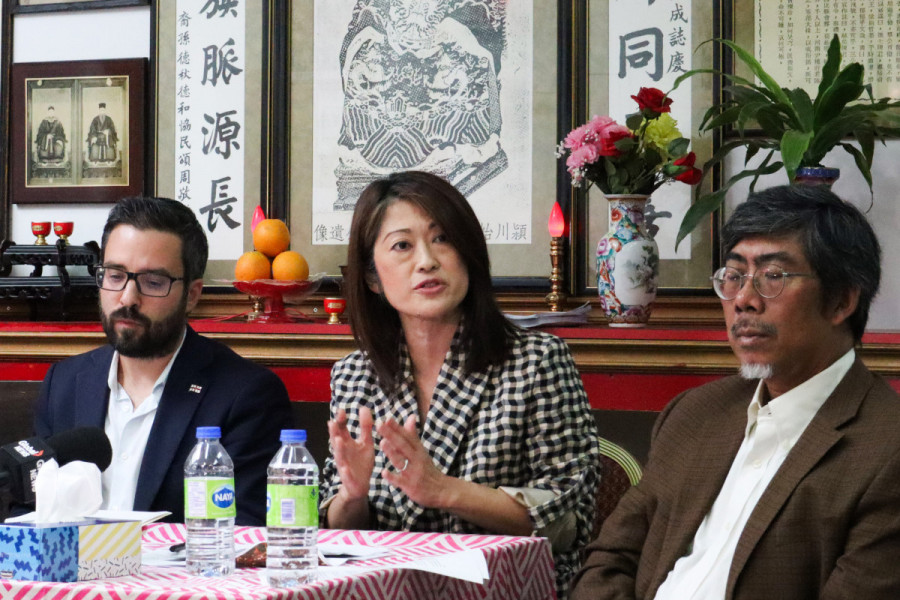
“Imposing infrastructures like Palais des Congrès that surround Chinatown still creates tension in the area for residents and visitors,” Kevin Sun, a 19-year-old Chinese-Canadian tells The Link. He explains that increased police presence and road blockages during events can isolate Chinatown for days at a time. He mentions that this seclusion has also increased due to the rise in crime and therefore, police intervention—a shared concern in the community.
Chen explains that the communal resistance against gentrification is deeply rooted in the historical struggle against racism in Canada, and the crucial role of these spaces as functional sanctuaries for the Chinese diaspora.
For individuals who are not part of the Chinatown community, it can be challenging to fully comprehend the difficulties of those within this marginalized neighbourhood.
The launch of the IRIS was held at the Chinatown Round Table within the Chan Family Association building—one of the few communal buildings in Chinatown that have been preserved for over 100 years. “This is where many of my ancestors once resided,” says Jimmy Chan with pride, who is the president of the association.
The launch was made up of research on the social and economic levers needed to protect and propel a rich future for Chinatown. Colin Pratte, the co-author of the study “Quel modèle de développement pour le quartier chinois de Montréal” additionally conducted by Joelle Gélinas, discussed the key elements of their findings during the roundtable.
He begins by underscoring the urgency of this topic: “In recent years, we have noticed an elevated number of buyers outside of the community purchasing properties in the area.”
The geographical location was concluded to be one of the detrimental factors of Chinatown as it is located near the centre of the city making it vulnerable to the fluctuations of the housing market.
“Chinatown is not just a museum, it is a living space with rich innovation that we must learn to support.” — Montreal city councillor Robert Beaudry.
He also remarked that the current Chinatown market is at a “tipping point.” This situation arises from the fact that the community comprises a substantial elderly population that is likely to consider selling their properties soon.
"Given our aging population, it becomes challenging for us to cover all expenses independently," remarked Walter Chiyan Tom, a research participant and an engaged member of the Chinatown community. He points out that one of the challenges they face is the burden of escalating commercial taxes. “There are mechanisms that are already there, but they are difficult to manage especially when there’s educational, cultural and language barriers.”
Pratte highlighted their research’s propositions through an analysis of other Chinatowns across North America.
“Without initiatives that drive a prosperous development of the area and a model that is different than the current gentrification model, the government’s recent measures will not be enough to withstand the market changes,” Pratte adds.
Numerous recommendations were given to address housing issues, with a particular emphasis on the success of community land trusts—a thriving solution across North America. Land trusts grant greater control over the area outside the conventional housing market and help preserve affordable housing for the community by having independent ownership from the surrounding market. Similarly, the enforcement of community benefits agreements, tailored to the specific needs of the population and backed by legal mandates, could be put in place.
The transformative changes also impact local businesses, and successful economic aid programs, like those in San Francisco and Los Angeles, support multigenerational companies. Another proposition is a system for managing temporarily vacant lots to accommodate and support the evolving landscape of Chinatown's development.
In terms of community life, it is encouraged that local institutions and associations play a crucial role in maintaining social cohesion within the neighborhood, while also participating in decision-making processes.
As with The Chinatown Round Table, which promotes proper neighbourhood representation through communal involvement in government initiatives, Chiu emphasizes the importance of reminding those in power to “consider the needs of Chinatown's most vulnerable residents.”
Lastly, the research presented touches upon preserving the area's heritage; it suggests allocating funds for new historical archives and other projects like repurposing the YMCA complex, Guy-Favreau, into a space for cultural activities.
A key emphasis made by Pratte was how Montreal needs to take initiative despite its historical injustices, as they have the opportunity to do better now.
_900_600_90.jpg)
“Chinatown is not just a museum, it is a living space with rich innovation that we must learn to support,” says Montreal city councillor Robert Beaudry. He mentions that he recognizes the insecurities and concerns government actions could raise among distrustful residents.
In a private conversation with Chiu, the decision to host this news conference, particularly in the Chan Family Association building was underlined, “We want to represent the uniqueness of Chinatown.”
The ground floor of the Chan Family Association building is where stores and restaurants help generate income. The second floor serves as a hub for social activities and gatherings. The third floor is where the tenants reside at more affordable rates, Chiu explains.
“The function of these associations was to represent the social services that weren’t present at the time [...], and the role that they played back then, they continue to play today, that is what we call a social economy,” Tom says.
He elaborates that the community's strength can be attributed to these associations, much like during the pandemic when residents supported the local economy by spending within the neighborhood. The Chan Family Association building currently has ten residents.
“Chinatown has more turned into a cultural experience for other people rather than a gathering point for Chinese people to reunite and have an authentic experience with each other and their heritage,” Sun says.

The neighborhood is intricately designed to sustain and uplift the Chinese community within a society that systematically neglected their social belonging outside of these walls. The disruption caused by gentrification in this community erodes its solidarity and challenges its economic, cultural, and social cohesion.
“Chinatown used to be this meeting point for connection for those with a Chinese background. It was a way for us to reconnect with our culture and each other,” says Sun while reflecting on his youth in Montreal’s Chinatown.
Sun says that the area's authenticity has gradually decreased, and instead of fostering unity within the community, it appears to be increasingly focused on drawing in outsiders. He notes how his fond memories of traditional cuisine have been overshadowed by Asian food chains.
“The problem is the city of Montreal has begun to surround Chinatown much more than Chinatown can bustle outwards like it used to,” Sun explains.
Despite these irreversible shifts, the resilience of the Chinatown communities stands as a testament to their cultural significance in Montreal’s urban landscape. While the battle persists throughout North America, implementing new regulations offers a glimmer of hope for the future of these communities.
“I can only hope to witness an authentic Chinatown again in the future,” Sun says.
This article originally appeared in Volume 44, Issue 3, published October 3, 2023.

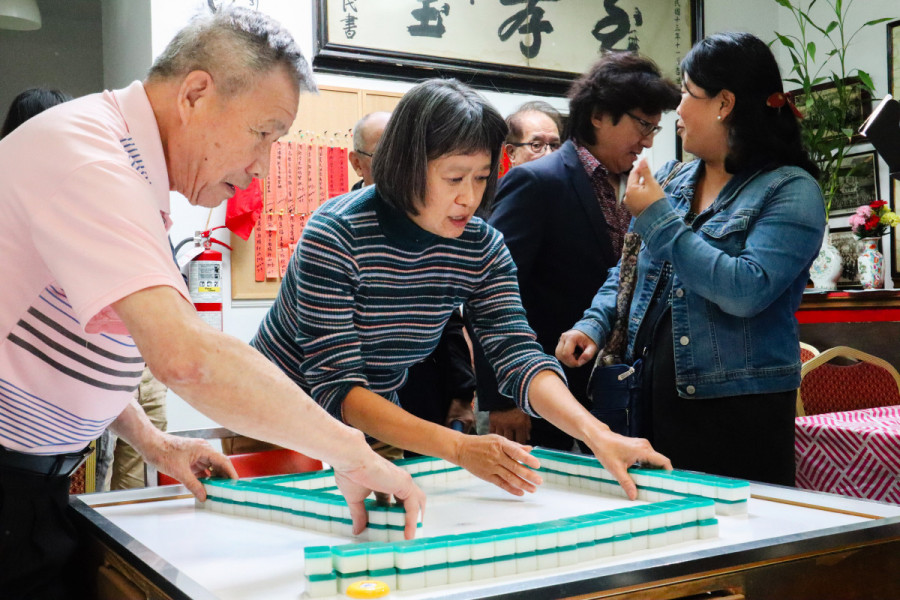
_600_832_s.png)

